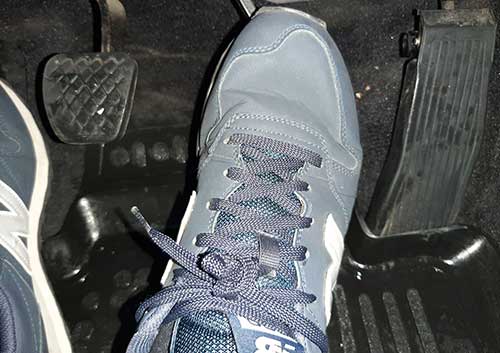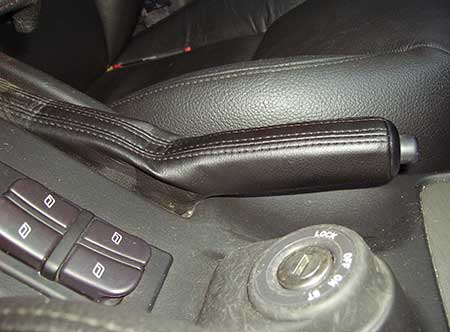You’ve probably thought at least once in your life of some possible darker scenarios related to driving a car and one of the darkest scenarios would be one where we remain unbroken while driving, especially at higher speeds in the environment. urban, how would you react in this situation?
Even if you feel that the car does not brake at all when you fully press the brake pedal, it would be advisable not to lift the foot off the brake, even if it seems that you do not brake at all, there is still a chance to brake a little, and in that climax everything can be solved with a correct decision, even if the effect is achieved only for a few tenths of a second, it can make the difference between life and death, here the reaction is very important.
Contents
Possible causes of brake system failure
In the case of disc brakes, there is a chance that only one of the calipers will lose pressure and the other one will continue to operate, the braking power will decrease in this case dramatically, but it does not disappear, which can stop the car in some safe conditions.
Another cause would be a broken pipe in which the brake fluid is located and important quantities are lost, air bubbles will enter the system, it will overheat and will no longer cope.
Very important in a car is the ABS (anti-lock braking system), this being a system for vehicles that prevents the wheels locking during braking, so it can make the difference between life and death at critical moments, within the limits of physics.

If your car does not have this safety system, which has become mandatory with the modernization of the vehicles many years ago, try to press several times, practically simulate an ABS, so that you do not lock the wheels completely and have a brake more efficient than in the case of locked wheels.
Thus press the brake pedal even if you do not feel any noticeable result, in moments of panic anyway you do not realize as well what is happening to you, ideally to calm down and take control of the situation.
An extremely important factor is the environment. Try to relax and take a deep breath to calm yourself down.
In the case of a gloomy scenario, being in the city, try to go to areas as isolated as possible and less populated by people, and if you are lucky and have a hill in front, this will greatly help you reduce your speed.
Are there other ways to brake if the braking system does not respond at all?
The answer is YES, you can use the braking power of the engine, and if you own a car equipped with an automatic transmission, you can start to pray, because its braking power is lower than a car equipped with a manual gearbox.
In the case of the manual transmission, you can downgrade in a step that will take the engine in the limitation, here I mean the speeds approaching the red line, so you can jump even 2 – 3 steps back (depending on the speed developed at the moment) in conditions of maximum urgency, recommended being to avoid downgrading in the first gear, eventually to use it if you really have no choice, ideally to have a speed of less than 10 kilometers per hour (~ 6 miles/h) when using this method.
The advantage offered by a revved engine in the handbrake is exercised in a very high braking power.

On an automatic transmission, it is practically the same thing, for the sequential ones being even simpler, in this case, you can switch the gearbox in manual or sports mode as the case may be, and downgrade as much as you can. In the case of older automatic transmissions, where you have the sign “D” and below it you have “3”, “2”, “1”, try to use them until you reach the initial step, step 1.
Another method to brake if the foot brake does not work is to use the emergency brake, even if we have an electric hand brake.
What do you do if none of the methods listed above work for you, or you have inefficient braking?
In this grim case, prepare for the impact, and choose the least evil possible. If you are in the suburbs, and you have hills around you, you can try to use them to brake faster, or you can run on the side of the road until the car stops by itself, pulling over or running on the emergency lane until when the car will tend to stop.
However, we hope you will never be in such a situation, and to be sure, do not forget to check the car from time to time.
How to perform an emergency stop if your brakes do not work?
Any driver should know the best way to stop the car if the brakes do not work anymore. It is useful to know how you can operate the braking at the engine level.
One of the things that any driver should know is to know how to stop the emergency car when the situation requires it. This is necessary considering that there are situations that we cannot control and in which it is necessary to stop safely.
If the brakes fail, it is good to know what measures you should take. This situation is one of the most feared situations with which a driver can meet.
It is also an extremely dangerous event, and managing this situation can make the difference between life and death. Keeping calm and knowing the steps we need to take are essential aspects for our own safety, but also the safety of other traffic participants.
1. Put the car in a lower gear
First of all, it is advisable to slow the car as quickly as possible. This measure can be applied both for cars with automatic transmission and manual transmission.
If the car is equipped with a manual transmission, it is advisable to go in a lower gear without crashing the car. It is not advisable to completely stop the engine because then you will no longer be able to control the steering wheel. It is also not advisable to put the car in the neutral position, as this maneuver will prevent you from continuing the braking process.
2. Do not press the gas pedal.
Although it might seem extremely logical, drivers in extreme situations can react abnormally. It is good to avoid the temptation to press the pedals because the acceleration will only worsen the situation.
3. Use emergency braking.
If you do this, you have a high enough chance to stop the car completely. If that doesn’t happen, at least you’ll be able to slow down. Emergency braking has different characteristics depending on the car. Therefore it is advisable to know your vehicle very well in order to anticipate its behavior in emergencies.
4. Pull over as soon as possible.
It is advisable to do this in order not to hinder traffic and not to expose yourself to unnecessary risks. It is good to use the emergency lane or any alveoli present at the roadside.
5. Let the other traffic participants know that you have a problem.
It is advisable to press the hazards warning lights button and possibly use the horn. Those around you should know that you have a problem so that they can continue their road safely.
6. Try to use a safe method to stop the car.
In the best case, using the above methods you will be able to reduce the running speed sufficiently so that you can stop the car naturally by gradually decreasing the speed.
If it is possible to hit something considering that all access roads are blocked, it is good to orient yourself for the object that has a low resistance. For example, it is better to point to a property fence, than to come in direct contact with a large tree.
